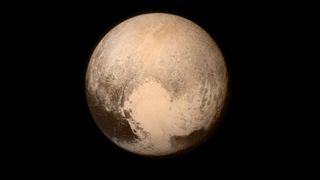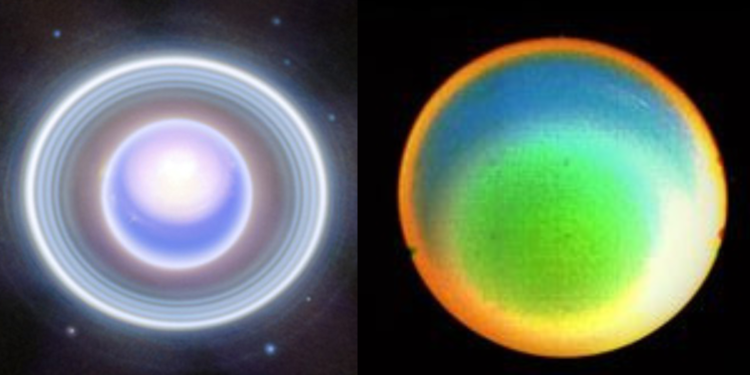For decades, astronomers have believed Uranus and Neptune, the solar system’s enigmatic ice giants, were dominated by frozen water. However, a recent study published on arXiv in March 2024 challenges this long-held assumption.
The research suggests these distant worlds might harbor a surprising abundance of frozen methane, potentially rewriting our understanding of their formation and the very nature of these elusive giants.
Beyond the Voyager Glimpse: Unveiling the Mysteries of Uranus and Neptune
Our knowledge of these distant ice giants remains limited. With only a single visit from Voyager 2 in the 1980s, scientists have relied on Earth-based observations and theoretical models to piece together their composition. These models typically depict Uranus and Neptune with a thin hydrogen-helium atmosphere, a layer of compressed water and ammonia below, and a rocky core at their heart. The presence of water ice earned them the moniker “ice giants,” with some estimates suggesting they hold a staggering amount – 50,000 times the water found in Earth’s oceans.
A Glitch in the Formation Theory: The Ice Giant Paradox
The new study, led by Uri Malamud of the Technion – Israel Institute of Technology, highlights a potential flaw in these existing models. They fail to account for the building blocks from which these giants formed. As Uranus and Neptune coalesced from the swirling dust cloud surrounding the young sun, they likely accreted planetesimals – the cosmic rubble that eventually clumps together to form planets. These planetesimals are believed to resemble present-day comets, many of which are rich in carbon, not water.
“How is it possible to form an icy giant from ice-poor building blocks?” ponders Malamud, underscoring the paradox at the heart of the current understanding. Ice giants, by definition, should be rich in water ice. Yet, the building blocks from which they formed seem to contradict this expectation.
Delving Deeper: Modeling the Ice Giants’ Interiors
To address this conundrum, Malamud and his team constructed hundreds of thousands of models simulating the interiors of Uranus and Neptune. Their algorithm progressively delved deeper into the planets, starting with surface composition and progressing towards the core. They factored in various elements like iron, water, and methane, the primary component of natural gas. The goal? Identify a model that best replicates the actual ice giants in terms of mass and radius.
Intriguingly, the models incorporating significant amounts of methane emerged as the most fitting candidates. This methane, potentially in solid or pressurized “mushy” states, could form a thick layer nestled between the hydrogen-helium atmosphere and the water layer. Some models even suggested methane could constitute a substantial 10% of the planets’ mass.
The Methane Solution: Unlocking the Formation Mystery
The presence of methane offers a potential solution to the ice giant paradox. The researchers propose that as these planets formed, the hydrogen within them reacted with the carbon from the accreted planetesimals, creating methane ice under the extreme temperatures and pressures believed to have existed during their formation. This scenario aligns with the conditions thought to prevail in these developing planets, resolving the apparent contradiction between the building blocks and the icy giant moniker.
A New Dawn for Understanding Ice Giants: Challenges and the Path Forward
These findings, though awaiting peer review, offer exciting possibilities for comprehending Uranus and Neptune. Verification, however, remains a challenge. Current telescopes lack the resolution to directly peer through the thick atmospheres and definitively identify methane on these distant worlds. Malamud acknowledges the difficulty of definitively proving the presence of methane on these distant worlds. Future missions proposed by NASA and other space agencies, specifically designed to explore Uranus, could be instrumental in this endeavor. One potential mission concept is the Uranus Orbiter and Probe (UOP), which is currently under study by NASA.

The quest to understand Uranus and Neptune continues. This new study, challenging our assumptions about their composition, paves the way for a revised understanding of these enigmatic ice giants. Further exploration, coupled with sophisticated modeling, will undoubtedly shed more light on their formation, composition, and place within our solar system’s grand narrative. Unraveling the mysteries of these distant giants will deepen our knowledge of the diverse planetary systems that can emerge from the same primordial ingredients, and perhaps even provide clues to the existence of similar ice giants orbiting distant stars.



















